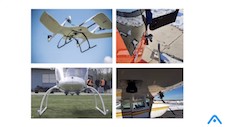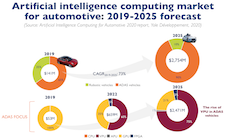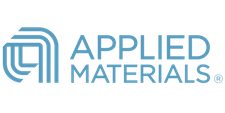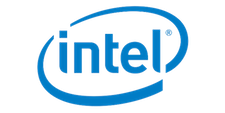| LETTER FROM THE EDITOR |
Dear Colleague,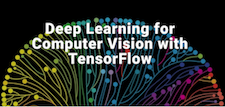
For less than $300, you can enjoy a first-rate training created by a Google Developer Expert on how to use TensorFlow and Keras for deep learning on computer vision projects. Originally an in-person class offered at the Embedded Vision Summit, we’ve moved the training to an on-line, on-demand format — but with the same great content, Jupyter Notebook labs, and instructor office hours! Are you an engineer who wants to design intelligent computer vision systems that learn from complex or large-scale datasets? Get the hands-on knowledge you need to develop deep learning computer vision applications—both on embedded systems and in the cloud—with TensorFlow, today’s most popular framework for deep learning. See here for more information and to register; use discount code SUMMER20NL until next Friday, July 31 for an additional 20% discount! Speaking of the Embedded Vision Summit…if you’re a product developer, engineer or business leader looking for real-world, commercial technologies that will help you add visual intelligence and AI to your new products, then you won’t want to miss the new sessions just added to our Enabling Technologies track at the Embedded Vision Summit. You’ll learn about the latest computer vision and AI tools, processors and techniques that you can use to quickly develop innovative products today! Check out the already announced talks in the Enabling Technologies track and other tracks for yourself. (We’re adding new talks daily, and it won’t be long before we’ll have nearly 100 talks across four tracks.) And then be sure to register today with promo code EARLYBIRDNL20-V to receive your Early Bird Discount! The Embedded Vision and Visual AI Industry Map, recently updated with search support and other enhancements, is a free-to-use tool that provides an efficient way to understand how hundreds of companies fit into the vision industry ecosystem. It is an interactive, visual database that displays companies within different layers of the vision value chain, and in specific end-application markets. It covers the entire embedded vision and visual AI value chain, from sub-components to complete systems. From our immersion in the embedded vision and visual AI industry over the past nine-plus years, we know that the right company-to-company partnerships are essential. We’re excited to provide this Industry Map to help people efficiently find the companies they want to partner with—and to help companies make themselves more visible. Check it out online; we welcome your feedback! Tomorrow, Thursday, July 23 at 9 am PT, Platform.ai will deliver the free webinar “AI Training Data Image Labeling and Few-Shot Learning: Under the Hood with Platform.ai” in partnership with the Edge AI and Vision Alliance. The time it takes to accurately and comprehensively label training images remains one of the biggest problems in AI. Outsourcing the labeling effort is particularly ineffective in cases where subject matter expertise is necessary to label the images or the images are confidential. Label accuracy in cases involving small training sets also remains a challenge. In this online presentation, Platform.ai will discuss how the company employs a diversity of AI techniques to visualize image sets, facilitating mass expert labeling, as well as how it applies new few-shot learning approaches to solve for low-data cases. For more information and to register, please see the event page. Brian Dipert |
| INDUSTRY TRENDS AND TRENDSETTING PRODUCTS |
|
2020 Vision Product of the Year Awards Ceremony
memorialized in a video recording of the event. Free Webinar Explores Key Trends in the Deployment of Edge AI and Computer Vision
Bier will explain what’s fueling each of these key trends, and will highlight key implications for technology suppliers, solution developers and end-users. He will also provide technology and application examples illustrating each of these trends, including spotlighting the winners of the Alliance’s yearly Vision Product of the Year Awards. A question-and-answer session will follow the presentation. See here for more information, including online registration. |
| COMPUTER VISION FOR AUTONOMOUS DEVICES |
|
Certifying Neural Networks for Autonomous Flight AI Computing for Automotive: The Battle for Autonomy |
| UPCOMING INDUSTRY EVENTS |
|
Platform.ai Webinar – AI Training Data Image Labeling and Few-Shot Learning: Under the Hood with Platform.ai: July 23, 2020, 9:00 am PT Edge AI and Vision Alliance Webinar – Key Trends in the Deployment of Edge AI and Computer Vision: August 20, 2020, 9:00 am PT and 6:00 pm PT Embedded Vision Summit: September 15-25, 2020 |
| FEATURED NEWS |
|
Lattice Semiconductor’s sensAI 3.0 Solutions Stack Increases Performance, Cuts Power Consumption for Edge AI Applications Graphcore Introduces 2nd Generation IPU Systems For AI At Scale Qualcomm Brings Advanced Artificial Intelligence and Machine Learning Capabilities to Smart Cameras with New System-on-Chips Imagination Technologies’ XS Product Class is Its Most Advanced GPU IP Yet IniVation Announces Foveator: Extreme Eye Tracking for Next Generation Immersive VR Experiences |
| EMBEDDED VISION SUMMIT SPONSOR SHOWCASE |
|
Attend the Embedded Vision Summit to meet these and other leading computer vision and edge AI technology suppliers! Applied Materials
Cadence Design Systems
Intel
Qualcomm Technologies |




